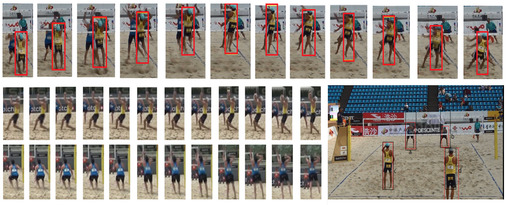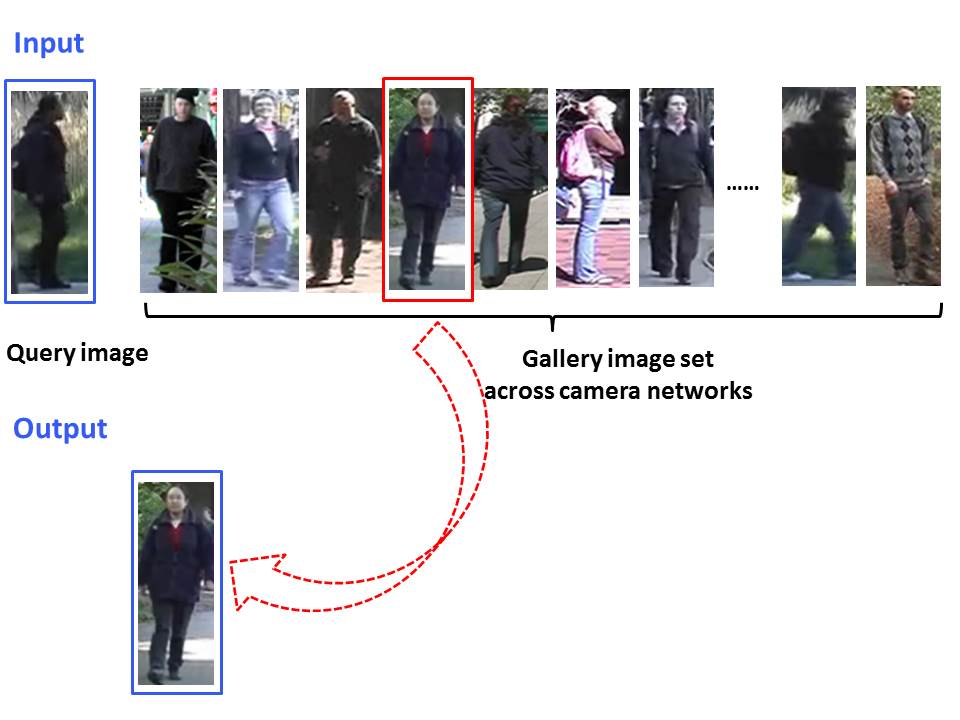Projects
3D Face Understanding (Supported by NSFC)

Automatic perception of facial information such as the identity, emotional state, gender, age, ethnicity origin etc. is very important in both theoretical and practical perspectives. This project is targeting reliable recognition of facial attributes on 2.5D or 3D face models (or making use of face shape and texture at the same time. It deeply investigates various aspects, including 3D feature extraction, 3D face landmarking, 3D face matching, expression recognition, age estimation, gender and ethnicity classification etc. It takes all the facial information into consideration, and discusses how these attributes interact with each other. It is expected to achieve fast and accurate facial information understanding.
Multi-level Human Being Centered Visual Surveillance (Supported by HongKong, Macao and Taiwan Science & Technology Cooperation Program of China)

To meet the new demands of social management and economic development of the mainland and Macau, the joint research project aims to integrate the intelligent multi-level outputs of event recognition, activity analysis, human attribute classification, and human identification and develop a multi-level human being centered visual surveillance system, based on the current biometric recognition techniques. Furthermore, the project puts the theory into practice and develops a non-contact, non-invasive, human being centered visual surveillance demonstration platform, which integrates a few biometric characteristics, such as face, gait and action. The surveillance platform is expected to deal with different monitoring environment at a distance and low resolution images or videos across disguising and occlusion, and the project will create great social and economic benefit for the development of the mainland and Macau.
Small Group Behavior Analysis for Sport Video (Supported by NSFC)

Sport video analysis attracts much attentions both among domestic and abroad researchers, and becomes a hot topic in intelligent multimedia analysis due to its economic and sociological significance. Traditional sport video analysis is to study the contents of the video and mainly focuses on mid-level semantic information extraction, automatic event detection, video retrieval, etc., which ignores the athletes and their interactions. This proposal will study small group behaviors in sport video and establish a theoretical framework for behavior analysis of athlete(s). The research of this project will not only supply technical foundation for sport video analysis, event detection and other applications, improving theoretical framework in sport video analysis, but also promote the breakthrough of vision-based small group behavior analysis, which has great theoretical value for behavior analysis in video surveillance.
Hierarchical Computing Theory and Model of Media Cognition (Supported by National Program on Key Basic Research Project, 973 Program)

Human vision has great perceptual power of the real word. This project targets building hierarchical perception statistical model to analyze the images in different levels, investigating feature fusion mechanism and its applications in computer vision, constructing spatio-temporal hierarchical prototype of tracking algorithm, evaluating the effect of different low-level features on saliency detection, modeling saliency based on visual attention analysis of images and videos, and feature extraction of salient low-level features. Specially, the biological vision inspired descriptor and saliency analysis are discussed in detail.
Human face aging simulation and age estimation based on huge amounts of digital media data in the network (Supported by NSFC)

Human face aging simulation and age estimation has a wide range of real-world applications and is also one of the main topics in face analysis. Traditional human face aging simulation and age estimation algorithms always require a high-quality face aging database. In practice, however, the construction of this kind of database takes a very long period of time. Moreover, most currently used face aging databases has obvious limitation in the distribution of age, gender and ethnic origin, which leads to the fact that human face aging simulation and age estimation algorithms can hardly be used in the real scenario. Our project will employ the huge amounts of data in the network media and collect face images and videos with age labels from it, constructing a face aging database containing face samples from varieties of ethnic origins and with uniform distributions of age and gender. Using this database, we will research on face aging simulation and age estimation algorithms, designing face aging simulation methods not depending on individuals' face image sequences at different age groups and face age estimation methods which is robust to the noises in the age labels. Furthermore, we will combine the face aging simulation method and age estimation algorithm in an iterative framework, enhancing the overall performance of the algorithms. Finally, this framework will be utilized in the age-invariant face recognition and retrieval, improving the recognition rate and retrieval accuracy when age differences exist between the test face and faces in the database.
Research on Person Re-identification across Surveillance Camera Networks (Supported by the Foundation for Innovative Research Groups of the National Natural Science Foundation of China)

Person re-identification across surveillance camera networks is a fundamental and critical task for intelligent video analysis, and has merged as a hot research topic in the computer vision community recently. It underpins many crucial applications in practice such as long-term human tracking across cameras, multi-camera human retrieval, and multi-camera event detection. Conventional solutions for person re-identification focus on human pose modelling, appearance feature extraction, human matching of still images captured from paired cameras, which has ignored the spatiotemporal characteristics of pedestrians and the transferring capability of existing approaches across complex camera networks. This project aims to enhance the discriminative and generalization ability of approaches for person re-identification based on still images. Meanwhile, this project attempts to explore the spatiotemporal features of pedestrians together with its fusion with appearance information, and boost the transferring capability of existing approaches across multiple cameras. It is expected to achieve more accurate and practical person re-identification across camera networks.
Human Attribute Classification and Identification Based on Biometric Gait for Surveillance Video (Supported by the Foundation for Innovative Research Groups of the National Natural Science Foundation of China)

Human gait is the movement style of people walking, by which the identity, gender, age, and other information of pedestrians can be automatically recognized. Compared with traditional biometrics such as iris, face, gait has many advantages, such as being long-distance accessible, non-contact and non-invasive. Therefore, gait analysis can be useful in many fields, for instance, the pedestrian identification in intelligent video surveillance, and has attracted more and more research attentions in recent years. This project aims to study the gait based human identification and human attribute (such as gender, age) in practical surveilliance videos. Moreover, this project will deeply investigate the fusion of gait with other biometrics such as face and human apperance information, of which the advanteges could be integrated to enhance the overall performance of approaches for surveillance video analysis. The research of this project will supply technical and theoretical foundation for gait recognition in surveillance video analysis, which has great practical value for surveillance video analysis.